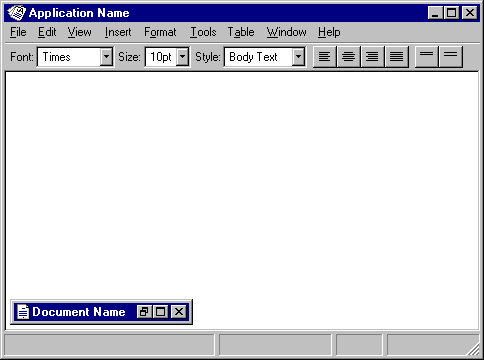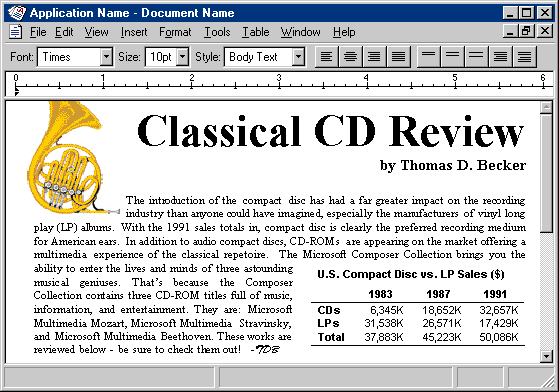Moving and Sizing MDI Windows
MDI allows the user to move or hide the child windows as a set by moving or minimizing the parent window. When the user moves an MDI parent window, maintain the relative positions of the open child windows within the parent window. Moving a child window constrains it to its parent window; in some cases, the size of the parent window's interior area may result in clipping a child window. Optionally, you can support automatic resizing of the parent window when the user moves or resizes a child window either toward or away from the edge of the parent window.
Note 
The recommended visual appearance of a minimized child window in Microsoft Windows is now that of a window that has been sized down to display only part of its title area and its border. This avoids potential confusion between minimized child window icons and icons that represent objects.
Although an MDI parent window minimizes as an entry on the taskbar, MDI child windows minimize within their parent window, as shown in Figure 9.2.

Figure 9.2 A minimized MDI child window
When the user maximizes an MDI parent window, expand the window to its maximum size, like any other primary window. When the user maximizes an MDI child window, also expand it to its maximum size. When this size exceeds the interior of its parent window, merge the child window with its parent window. The child window's title bar icon, Restore button, Close button, and Minimize button (if supported) are placed in the menu bar of the parent window in the same relative position as in the title bar of the child window, as shown in Figure 9.3. Append the child window title text to the parent window's title text.

Figure 9.3 A maximized MDI child window
If the user maximizes one child window and it merges with the parent window and then switches to another, display that window as maximized. Similarly, when the user restores one child window from its maximized state, restore all other child windows to their previous sizes.


